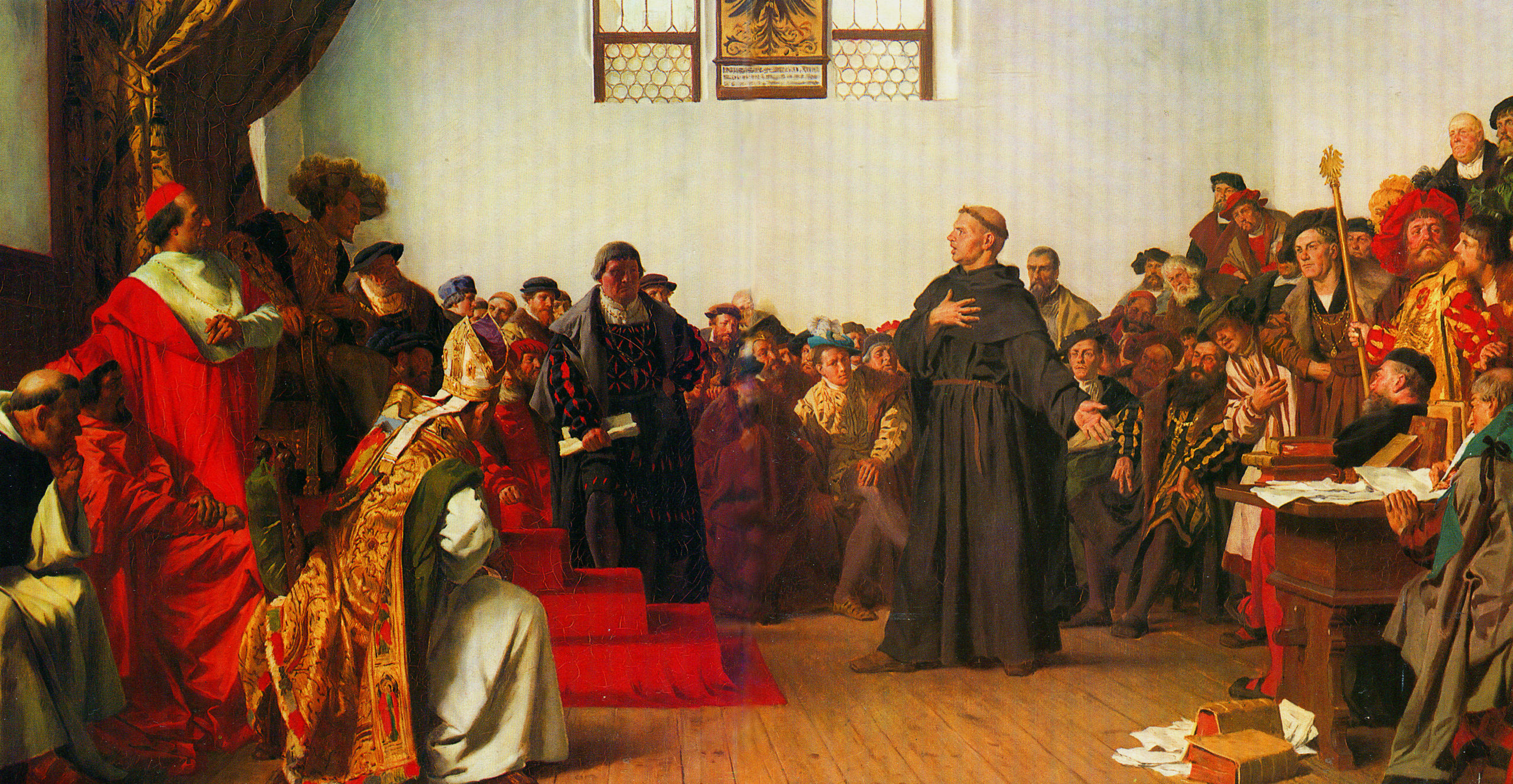Luther at the Diet of Worms in 1521. Anton von Werner, 1877
Martin Luther is the first person to see his ideas go viral with the printing press. In October 1517, he publishes a list of 95 theses criticizing the Catholic church. He reportedly nails a copy to the front door of the church door in Wittenberg – the 16th century Twitter feed. Luther goes viral and sells more than 300,000 books before 1520.
In 1521, the Pope and the Holy Roman Emperor Charles V both try to stop the viral reformation in its tracks. The Pope excommunicates Luther, while the Emperor bans the printing, selling, possession and reading of his works. When Charles V orders Luther to recant at the Diet of Worms in April 1521, Luther refuses:
“Unless I am convicted by the testimony of scripture or plain reason…I am bound by the scriptures I have quoted, and my conscience is captive to the Word of God. I neither can nor will revoke anything, for it is neither safe nor honest to act against one’s conscience. Amen”
– Luther at the Diet of Worms, 1521
The Emperor’s brother, King Ferdinand, bans Protestant literature and preaching in Austria, Bohemia and Hungary.
